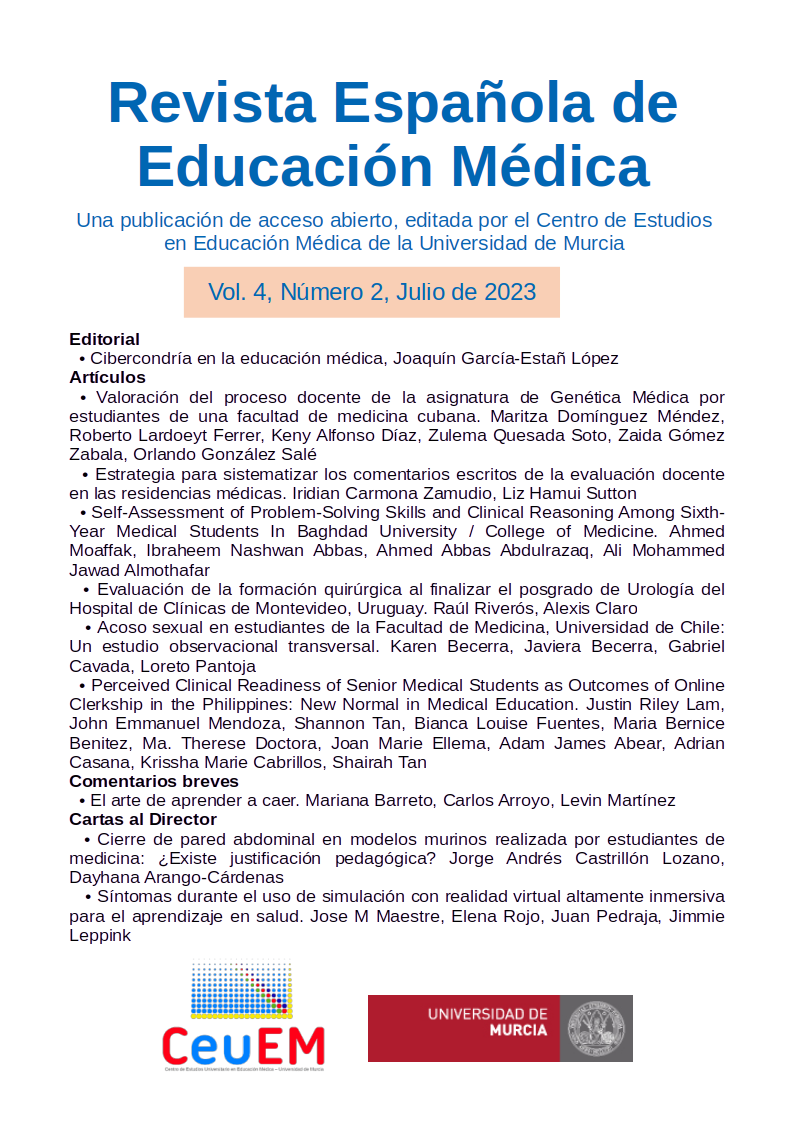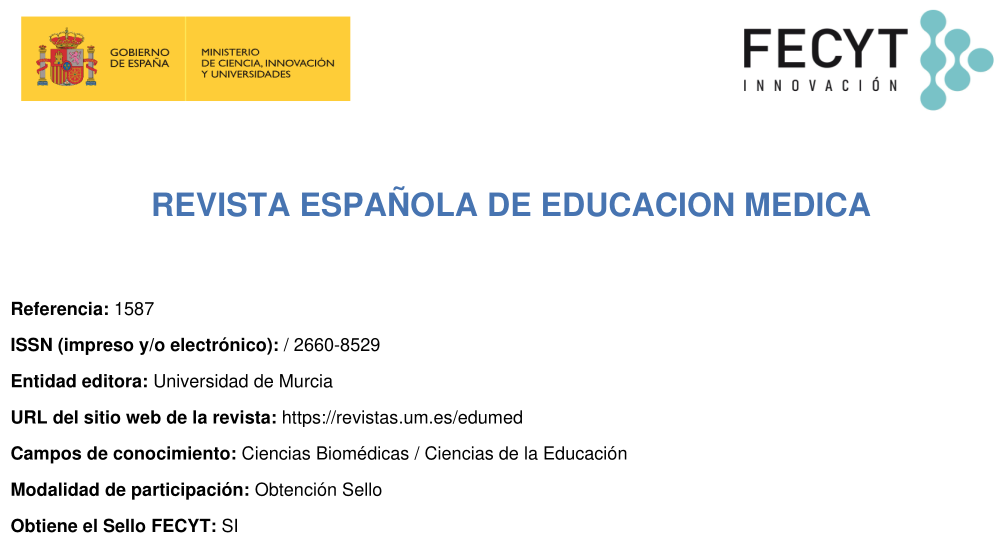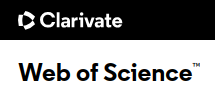Cyberchondria in medical education
Abstract
Cyberchondria is a term used to describe the excessive worry and anxiety a person experiences due to medical information they find online. This term refers to the tendency of some people to search for information about their symptoms or health concerns on the internet and then misinterpret that information to conclude that they have a serious or dangerous illness, even when that is not necessarily true. Cyberchondriacs can spend hours browsing medical websites, discussion forums, and other online resources, looking for information about symptoms or illnesses they think they have. This constant search for information can lead to increased anxiety and fear about one's own health, which in turn can lead to avoidance behaviors, such as avoiding leaving the house or constantly seeking medical attention. It's important to note that while online medical information can be helpful, it can also be incorrect, incomplete, or based on assumptions and speculation. In addition, the excess of medical information (infodemic) can create unnecessary anxiety and stress and can make it difficult to make informed decisions about health.
Downloads
Metrics
-
Abstract1190
-
pdf (Español (España))681
-
pdf681
References
McElroy E, Shevlin M. The development and initial validation of the cyberchondria severity scale (CSS). J Anxiety Disord. 2014;28(2):259-265. doi:10.1016/j.janxdis.2013.12.007
Devi GS, Prasanth D, Kumar KP. Cyberchondria: An emerging form of health anxiety. Archives of Mental Health 2021; 22(2(:148.152. http://doi.org/10.4103/amh.amh_49_21
Waterman, Lauren Z, and John A Weinman. 2014. “Medical Student Syndrome: Fact or Fiction? A Cross-Sectional Study.” JRSM Open 5 (2): 204253331351248
Hardy, M. S., & Calhoun, L. G. (1997). Psychological distress and the “Medical Student Syndrome” in abnormal psychology students. Teaching of Psychology , 24(3), 192–193. doi:10.1207/s15328023top2403_10
Walton, G. L. (1908). Why worry? J B Lippincott Company., doi:10.1037/13647-000
Hunter, R. C. A., Lohrenz, J. G., & Schwartzman, A. E. (1964). Nosophobia and hypochondriasis in medical students. The Journal of Nervous and Mental Disease , 139(2), 147–152. doi:10.1097/00005053-196408000-00008
Collier, R. (2008). Imagined illnesses can cause real problems for medical students. Canadian Medical Association Journal , 178(7), 820–820. doi:10.1503/cmaj.080316
Yang Y, Ta N, Li Z. Investigating the Obsessive and Compulsive Features of Cyberchondria: A Holistic Review. Front Psychol. 2022;13:897426. Published 2022 Jul 4. doi:10.3389/fpsyg.2022.897426
Khazaal Y, Chatton A, Rochat L, et al. Compulsive Health-Related Internet Use and Cyberchondria. Eur Addict Res. 2021;27(1):58-66. doi:10.1159/000510922
Arsenakis S, Chatton A, Penzenstadler L, et al. Unveiling the relationships between cyberchondria and psychopathological symptoms. J Psychiatr Res. 2021;143:254-261. http://doi.org/10.1016/j.jpsychires.2021.09.014
McMullan, R.D., Berle, D., Arnáez, S. and Starcevic, V. The relationships between health anxiety, online health information seeking, and cyberchondria: systematic review and metaanalysis. Journal of Affective Disorders, 2019; 245: 270-278, doi: 10.1016/j.jad.2018.11.037.
Zheng, H., Sin, S.-C.J., Kim, H.K. and Theng, Y.-L. (2021), "Cyberchondria: a systematic review", Internet Research, Vol. 31 No. 2, pp. 677-698. https://doi.org/10.1108/INTR-03-2020-0148, https://www.emerald.com/insight/content/doi/10.1108/INTR-03-2020-0148/full/html
Arnáez, S., García-Soriano, G., Castro, J. et al. The Spanish version of the short form of the Cyberchondria Severity Scale (CSS-12): Testing the factor structure and measurement invariance across genders. Curr Psychol (2022). https://doi.org/10.1007/s12144-022-03170-3
McElroy E, etal. The CSS-12: Development and Validation of a Short-Form Version of the Cyberchondria Severity Scale. Cyberpsychology, Behavior, and Social Networking 2019 22:5, 330-335.
Mestre-Bach G, Potenza MN. Cyberchondria: a Growing Concern During the COVID-19 Pandemic and a Possible Addictive Disorder?. Curr Addict Rep. 2023;10(1):77-96. doi:10.1007/s40429-022-00462-3
Aulia A, Marchira CR, Supriyanto I, Pratiti B. Cyberchondria in First Year Medical Students of Yogyakarta. Journal of Consumer Health on the Internet, 24:1, 1-9. http://doi.org/10.1080/15398285.2019.1710096
Batigun A, Gor N, Komurcu B, Erturk IP. Cyberchondria Scale (CS): Development, Validity and Reliability Study. Dusunen Adam The Journal of Psychiatry and Neurological Sciences 2018; 31(2): 148-162 DOI: 10.5350/DAJPN2018310203
Farooq A, Laato S, Islam AKMN. Impact of Online Information on Self-Isolation Intention During the COVID-19 Pandemic: Cross-Sectional Study. J Med Internet Res 2020;22(5):e19128. Doi: 10.2196/19128
Laato S, Najmul AKM, Islam M & Whelan E. What drives unverified information sharing and cyberchondria during the COVID-19 pandemic?, European Journal of Information Systems, 2020; 29:3, 288-305, DOI: 10.1080/0960085X.2020.1770632.
Inmens. Cibercondria. Julio 2020. https://www.inmens.es/articulo/cibercondria-adolescentes (visitada el 4/5/23).
Patanapu SK, Sreeja CS, Veeraboina N, Reddy KV, Voruganti S, Anusha P. Prevalence and effect of cyberchondria on academic performance among undergraduate dental students: An institutional based study. Ind Psychiatry J. 2022 Jul-Dec;31(2):228-234. http://doi.org/10.4103/ipj.ipj_272_21
Kanganolli SR, Kumar P. A cross-sectional study on prevalence of cyberchondria and factors influencing it among undergraduate students. International Journal of Medical Science and Public Health Online 2020; 9(4); 263-266. http://doi.org/10.5455/ijmsph.2020.01010202020022020
Bati AH, Mandiracioglu A, Govsa F, Çam O. Health anxiety and cyberchondria among Ege University health science students. Nurse Educ Today. 2018;71:169-173. doi:10.1016/j.nedt.2018.09.029
Capdevila-Gaudens P, García-Abajo JM, Flores-Funes D, García-Barbero M, García-Estañ J (2021) Depression, anxiety, burnout and empathy among Spanish medical students. PLoS ONE 16(12): e0260359. https://doi.org/10.1371/journal.pone.0260359
Copyright (c) 2023 Servicio de Publicaciones de la Universidad de Murcia

This work is licensed under a Creative Commons Attribution-NonCommercial-NoDerivatives 4.0 International License.
The works published in this magazine are subject to the following terms:
1. The Publications Service of the University of Murcia (the publisher) preserves the economic rights (copyright) of the published works and favors and allows them to be reused under the use license indicated in point 2.
2. The works are published under a Creative Commons Attribution-NonCommercial-NoDerivative 4.0 license.
3. Self-archiving conditions. Authors are allowed and encouraged to disseminate electronically the pre-print versions (version before being evaluated and sent to the journal) and / or post-print (version evaluated and accepted for publication) of their works before publication , since it favors its circulation and earlier diffusion and with it a possible increase in its citation and reach among the academic community.



















